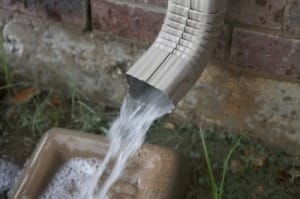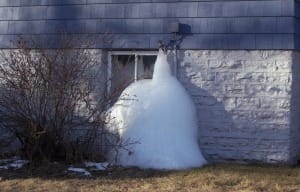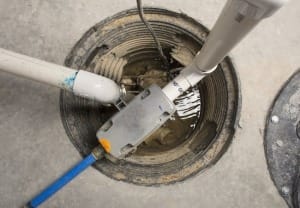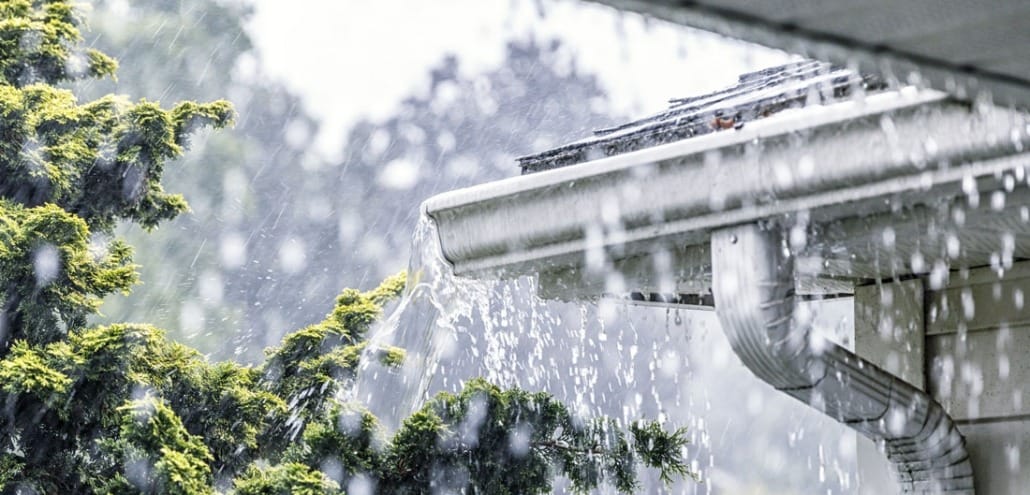Outdoor Spring Plumbing Tips: Disaster Can be Avoided Outside Your Home
As the season begins to change here in North Carolina, we see the cold of Winter begin to change to a warmer Spring climate. With winter's freezing temperatures being thawed by the air becoming warmer, many possible plumbing disasters could occur. Fear not, however! Your friends at Raleigh's number one name in plumbing, Poole's Plumbing, are here with their Outdoor Spring Plumbing Tips to remind and help you of items that can avoid these possible disasters and save you big in the long run!
Major Checking Points for Outdoor Spring Plumbing Tips to Avoid Clogs, Backups, or Leaks Outside Your Home as Winter Changes to Spring
- Gutters
- Downspouts
- Drains
- Hoses
- Hose Bibs
- Vents
- Plumbing Pipes
- Sump Pump

Keep an eye on your downspouts to be sure the do not get clogged or restricted by debris.
Drains, Gutters, and Downspouts: Keep Them Clear, Have No Fear
On top of the temperature change, another unavoidable weather trend as Winter turns to Spring is an increase in rainfall. Thus, with more rainfall comes the need to avoid any type of flooding. The first of our Outdoor Spring Plumbing Tips is to have you be sure your outside drains, gutters, and downspouts are completely clear and free of any debris.
Items to check for that can pile up and cause a blockage in these areas are leaves, sticks, bird nests, or a host of other things. Any or all of these items can easily accumulate during the wintery winds and precipitation without you realizing it. In addition to the areas pointed out above, be certain to check all outside vents or pipes, too. Thus, upon the "winter thaw," it is best to heed this first of our Outdoor Spring Plumbing Tips. This way, not only are these areas free and clear but so is your conscience knowing you need not worry about backup or flooding in these areas.

A frozen up hose bib can lead to disastrous results if not addressed early and properly.
Check for a Leak, Give Hoses and Hose Bib a Peek
Our next Outdoor Spring Plumbing Tips will take you to another area that is easy to look over since you likely haven't used a hose all winter. That's right, we move next to your outdoor hoses and hose bibs. As just mentioned, you don't normally use a hose in the colder months, however, if you had the hose connected all Winter, you need to check.
When tacking these next Outdoor Spring Plumbing Tips, start by looking at the hose bib. Look initially at the faucet to be certain there are no leaks. Leaks can definitely be a problem especially if the hose was never disconnected prior to the cold temperatures of winter. This happens and is a fairly common problem as if hooked up all winter it can lead to your water supply-pipe freezing over. If this occurs it can lead to expansion of said pipe and thus, cracking or bursting. If in your checking, you see this to be the case, immediately call Poole's Plumbing. This way, one of our expert plumbers can analyze and if needed replace the pipe before major water damage occurs.

Testing to be sure your sump pump if functioning properly should be a top priority when the cold weather begins heating up.
The Sump Pit: What is it? What Outdoor Spring Plumbing Tips Can Help to Keep Things "Pumping?"
All maintenance and Outdoor Spring Plumbing Tips to this point are very important and can avoid messy and costly problems. That being said, possibly the most important and top priority should be your sump pump. First off for those unfamiliar with the sump pump or sump pit, the pit is a hole, with a gravel base dug into the lowest point of your basement. When water comes into the sump pit, the pump's sensor activates it, turning it on, and moving the water away from your home.
With the thawing and melting that will surely happen during the season change, your sump pump will be getting quite a "workout." Thus, you must check to be sure it is working correctly. To follow this, which is next among our Outdoor Spring Plumbing Tips, first fill a few buckets with water. Then, pour the buckets into the sump pit. This should start up the pump with in a few seconds and the water should flow away from the house. However, if the pump does not start or you notice it not working properly, this could become a major issue. Again, if you do see the sump pump not starting, call the experts at Poole's Plumbing. They can diagnose the problem in person and avoid the pump completely burning out. This will help you avoid the need for a far more vcostly repair.
From the Outside to Indoors in Our Next Post
Taking just a little time to go around the outside of the house to check on these items could be the difference between having or not having major plumbing issues. Not following these easy Outdoor Spring Plumbing Tips can lead to serious water damage, and serious damage to your wallet.
In our next post, the second in this two-part series, we move from outdoors to the inside of the home. Much like these Spring Outdoor Plumbing Tips, next post's indoor suggestions can help you avoid damage and also help avoid unnecessary costly problems. To contract or for more on all the services Poole's Plumbing can help you with visit poolesplumbing.com.






